Most downloaded
- Page Path
-
- HOME
- BROWSE ARTICLES
- Most downloaded
"Most downloaded" Articles are from the articles published in 2023 during the last six months.
- Original Article
- Endocrinology
- Long-term epidemiological insights into rickets: a nationwide population-based retrospective study (35 times)
- Chun-Hao Chu, Ying-Chuan Chen, Pei-Yao Liu, Chun-Chieh Hu, Yu-Lung Lin, Feng-Chih Kuo, Chieh-Hua Lu, Tzu-Ju Hsu, Yu-Tung Hung, Fuu-Jen Tsai, Chien-Ming Lin
- Clin Exp Pediatr. 2025;68(11):879-891. Published online August 20, 2025
-

Question: What are the nationwide trends and mortality risk factors of nutritional versus hereditary rickets among children in Asia?
Finding: In 2012–2018, the incidence of rickets steadily increased, whereas mortality rates declined. Mortality is associated with a low household income, anemia, chronic kidney disease, secondary hyperparathyroidism, and a prolonged hospital stay.
Meaning: Early diagnosis and targeted interventions addressing social and medical vulnerabilities are critical to reducing ricket-related mortality.
- Neurology
- Evaluation of pediatric migraine triggers: a single-center study (34 times)
- Hey-Joon Son, Joo-Ok Jin, Kon-Hee Lee
- Clin Exp Pediatr. 2025;68(2):163-169. Published online November 11, 2024
-
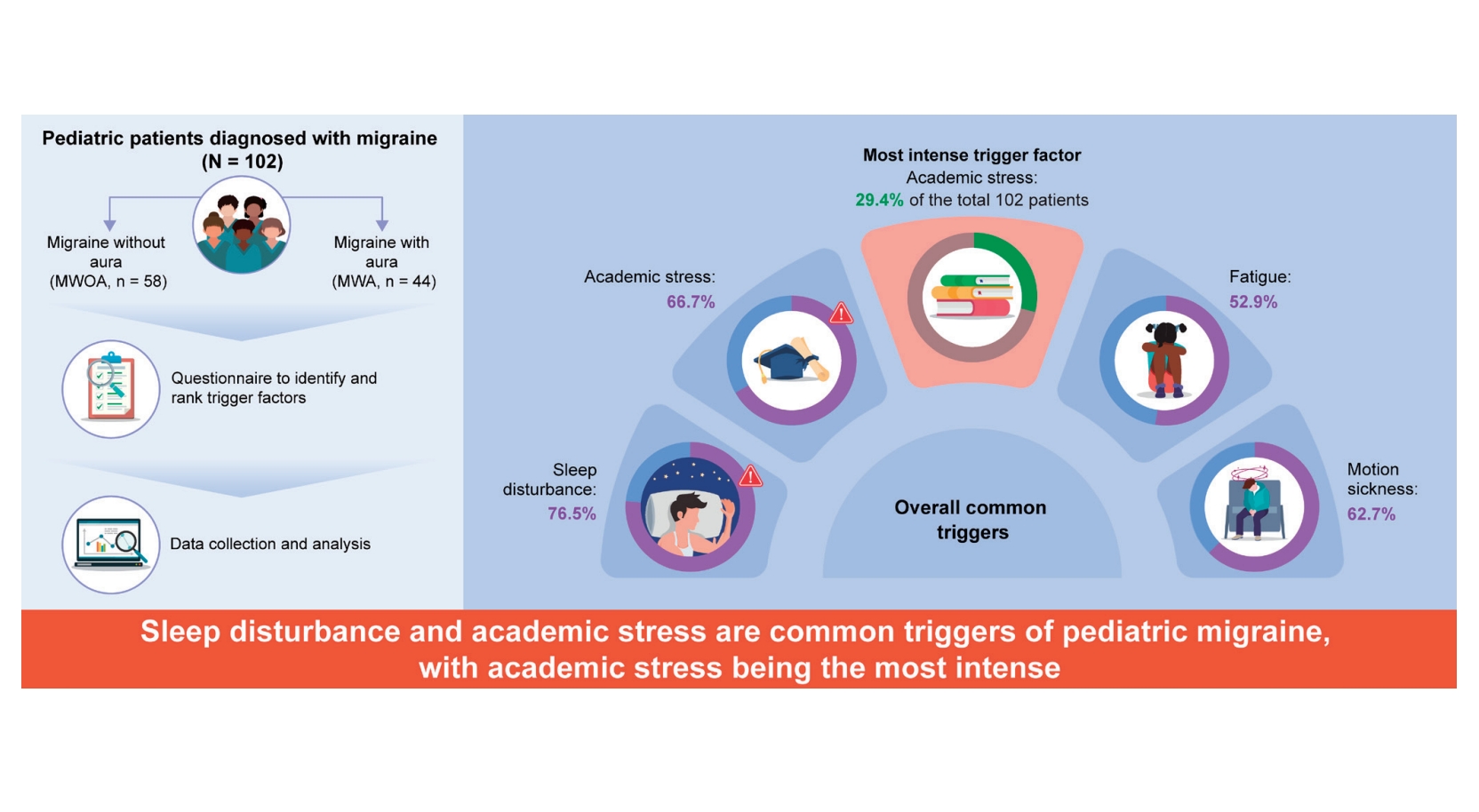
Question: What are the primary triggers for pediatric migraines, and how do they impact clinical management?
Finding: Common triggers for pediatric migraines include sleep disturbances, academic stress, and motion sickness, with academic stress identified as the most intense.
Meaning: Recognizing and addressing specific triggers like sleep disturbance and academic stress is crucial to effectively managing pediatric migraines with emphasis on personalized care to improve outcomes.
- Review Article
- Nutrition
- The Korea Infant Physical Growth Examination Survey (KIPGroS): a study protocol (34 times)
- Jong Woo Hahn, MinSoo Shin, Jin Gyu Lim, Yoon-Joo Kim, Ki Soo Kang, Narae Lee, Seong Hee Jeong, Mun Hui Jeong, Yeoun Joo Lee, Eui Kyung Choi, Jung Ok Shim, Jee Yoon Park, Chan-Wook Park, Joo Young Kim, Su Jin Jeong, Young Hwa Jung, Jaehyun Kim, Chang Won Choi, Ju Whi Kim, Seung Han Shin, Yun Jeong Lee, Young Ah Lee, Choong-Ho Shin, Seung-sik Hwang, Young Eun Kim, Youn Ha Kang, Kyungwon Oh, Sungha Yun, Jae Sung Ko, Jin Soo Moon
- Clin Exp Pediatr. 2025;68(5):352-358. Published online February 13, 2025
-
The suitability of World Health Organization (WHO) growth charts for assessing the growth of children under 3 years of age in all countries remains controversial, and their applicability must be evaluated based on country-specific growth data. The Korea Infant Physical Growth Examination Survey evaluated the suitability of WHO growth charts to contribute to the next revision of growth charts in Korea.
- Original Article
- Other
- Impact of thyroid hormones and serum endothelin levels on pediatric asthma control: a case-control study of an Indian population (34 times)
- Murugaiyan Sathishbabu, Sathiya Ramasamy, Niranjjan Ramachandran, Soundararajan Palanisamy, Arulvijayavani Subramaniam
- Clin Exp Pediatr. 2025;68(10):831-837. Published online September 22, 2025
-
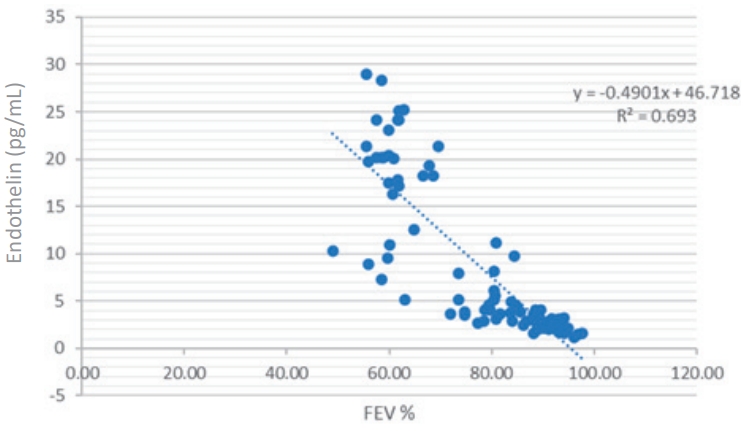
Question: What are the roles of thyroid hormones and endothelin in South Indian children with asthma?
Finding: Thyroid hormone and endothelin levels were significantly elevated in South Indian children with asthma; poorly controlled cases exhibited the highest levels. Elevated thyroid-stimulating hormone and endothelin levels were correlated with asthma severity.
Meaning: Serum endothelin is a potential surrogate marker for asthma severity that could aid the assessment and management of childhood asthma.
- Neonatology (Perinatology)
- Efficacy of body position on gastric residual in preterm infant: a systematic review and meta-analysis (33 times)
- Kurvatteppa Halemani, Alwin Issac, Sanjay Dhiraaj, Prabhaker Mishra
- Clin Exp Pediatr. 2023;66(6):262-270. Published online November 30, 2022
-

Breastfeeding and it's tolerance are the positive indicators for preterm babies. Placing the preterm infant in the right lateral or prone position after feed had lesser gastric residual volume compared to placing them in left lateral or supine positions. The post-feed position is a vital element in enhancing feeding tolerance, mechanical functions of the gastrointestinal tract and the overall development of preterm infants.
- Neurobehavior
- Association between previous abortion history and risk of autism spectrum disorders among offspring: a meta-analysis (33 times)
- Ensiyeh Jenabi, Erfan Ayubi, Saeid Bashirian, Mahdieh Seyedi, Mohammad Rezaei
- Clin Exp Pediatr. 2023;66(2):70-75. Published online August 17, 2022
-
Question: This study aimed to determine whether there is an association between previous abortion history and the risk of autism spectrum disorders (ASDs) among children.
Finding: We found that the risk of ASD associated with previous abortion history had an odds ratio of 1.64 (95% confidence interval, 1.28–2.0; I2=61.7%).
Meaning: These findings suggest a positive and significant association between history of previous abortion and risk of ASD in children.
- Review Article
- Critical Care Medicine
- Recent updates on systemic treatment of atopic dermatitis (33 times)
- Jiyoung Ahn
- Clin Exp Pediatr. 2024;67(11):580-588. Published online November 1, 2024
-
Atopic dermatitis (AD) is a complex disease with multifactorial pathogenesis and variable clinical presentation. Up to one-fifth of patients with AD develop moderate to severe disease that is often refractory to classical therapies and can compromise quality of life. This review summarizes recent clinical evidence on biological agents and small-molecule immunotherapies for the treatment of AD.
- Endocrinology
- Hidden link between endocrine-disrupting chemicals and pediatric obesity (33 times)
- Min Won Shin, Shin-Hye Kim
- Clin Exp Pediatr. 2025;68(3):199-222. Published online November 28, 2024
-
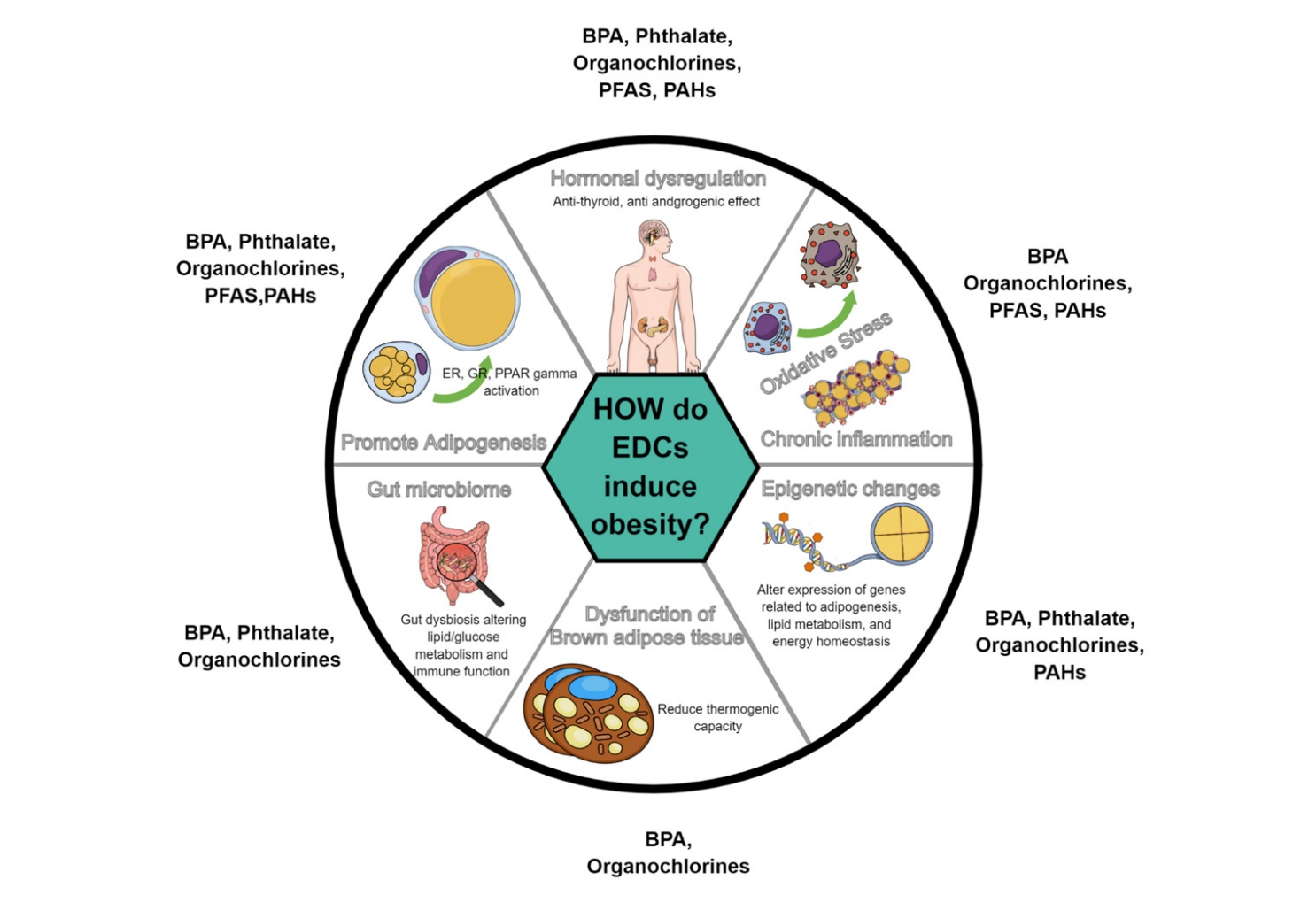
Studies indicate potential connections between exposure to endocrine-disrupting chemicals (EDCs) and childhood obesity. Variations in the impact of EDCs in epidemiological studies may result from differences in exposure concentrations and timing, measurement methods, and interactive effects of multiple EDCs. Longitudinal studies on exposure to multiple EDCs are crucial to elucidating their contribution to pediatric obesity and minimize the adverse health consequences of EDC exposure.
- Neurology
- Cerebral organoid research for pediatric patients with neurological disorders (33 times)
- Jin Eun, Jung Eun Lee, Seung Ho Yang
- Clin Exp Pediatr. 2025;68(4):269-277. Published online November 28, 2024
-

Cerebral organoids obtained from human induced pluripotent stem cells are transforming the study of pediatric neurological diseases by providing more accurate models of human brain development and pathology. These advancements have improved pathology modeling and the potential for novel therapeutic approaches despite existing challenges such as reproducibility and vascularization.
- Allergy
- Recent topics on gastrointestinal allergic disorders (32 times)
- Yoshiyuki Yamada
- Clin Exp Pediatr. 2023;66(6):240-249. Published online January 9, 2023
-

Gastrointestinal (GI) allergies are divided into immunoglobulin E (IgE)-mediated, non-IgE-mediated, and mixed types. In addition to non-IgE-mediated, overlapping eosinophilic GI disorders (EGIDs) have increased in Japan. EGIDs, a mixed-type allergy category, include eosinophilic esophagitis (EoE) and non-EoE EGIDs. The number of EoE cases has increased in Western countries, followed by Asian countries. Recent GI allergies may also be associated with type 2 inflammation.
- Neonatology (Perinatology)
- Influence of infant microbiome on health and development (32 times)
- Noelle Younge
- Clin Exp Pediatr. 2024;67(5):224-231. Published online August 21, 2023
-

· The infant gut microbiome is highly dynamic and individualized.
· Microbes are vertically transmitted from mother to infant during delivery and throughout infancy.
· Delivery mode, gestational age, diet, and antibiotic use influence infant microbiome composition and function.
· In animal studies, the microbiome played critical roles in the structural and functional development of the infant gastrointestinal and immune systems.
· Microbiome-targeted therapies have great potential to reduce infant morbidity and mortality.
- Perspective
- Other
- Telemedicine in pediatrics: things to consider (32 times)
- Sandhya J. Kadam, Archana Reddy Bongurala
- Clin Exp Pediatr. 2025;68(4):326-328. Published online February 3, 2025
-

This article highlights the benefits, challenges, and current significance of telemedicine. Future research is needed, primarily to address the challenges of optimizing the implementation of telehealth. To use telemedicine effectively and efficiently for the timely diagnosis and management of patients, an evaluation of current telemedicine practice is needed. Analysis of shortcomings and advantages can help enhance healthcare delivery to pediatric patients, making it more accessible for future use.
- Original Article
- Immunology
- Serum bactericidal activity against meningococcus in patients with systemic lupus erythematosus (32 times)
- Soyoung Lee, Kyung-Hyo Kim, Ji Hyen Lee, Han Wool Kim
- Clin Exp Pediatr. 2025;68(5):362-369. Published online January 13, 2025
-

Question: What is the level of immunity against meningococcal infections in patients with systemic lupus erythematosus (SLE) under the age of 19, and is vaccination against meningococcus necessary for these patients, given their susceptibility to infections due to immunosuppressive treatments and disease characteristics?
Finding: Although some of our study patients exhibited serum bactericidal activity against meningococci, most remained seronegative.
Meaning: These findings suggest that patients with SLE who are at risk of meningococcal infection receive appropriate vaccinations.
- Genetics and Metabolism
- Role of microRNA-498 and microRNA-410 in neonatal hypoxic-ischemic encephalopathy (32 times)
- Eman Salah Eldeen Arafat, Hasnaa Hesham Abotaleb, Dina Abdel Razek Midan, Abdel Hamid Abdo Ismail, Zeinab Sabri Abouzouna
- Clin Exp Pediatr. 2025;68(7):512-521. Published online February 26, 2025
-

Question: Is it role of microRNA-410 (miRNA-410) and microRNA-498 (miRNA-498) in neonatal hypoxic-ischemic encephalopathy (HIE)?
Findings: miRNA-498 and miRNA-410 can be auxiliary diagnostic and prognostic tools for neonatal HIE.
Meaning: we can use miRNA-498 and miRNA-410 as markers and indicator for HIE.
- Neonatology (Perinatology)
- A thickened formula reduces feeding-associated oxygen desaturation and bradycardia in preterm infants (31 times)
- Gayoung Lee, Juyoung Lee, Ga Won Jeon, Yong Hoon Jun
- Clin Exp Pediatr. 2023;66(1):32-37. Published online December 15, 2022
-

Question: Is a commercial thickened formula able to alleviate oral feeding-associated desaturation and bradycardia in preterm infants?
Finding: Thickened formula feeding significantly reduced oral feeding-associated desaturation and bradycardia in preterm infants.
Meaning: Thickened formula feeding stabilizes oxygen saturation and heart rate during oral feeding among preterm infants with feeding difficulties.
- Endocrinology
- Kisspeptin and DLK1 levels for monitoring treatment of girls with central precocious puberty (31 times)
- Witchuwan Onsoi, Nattakarn Numsriskulrat, Suphab Aroonparkmongkol, Vichit Supornsilchai, Khomsak Srilanchakon
- Clin Exp Pediatr. 2024;67(6):296-302. Published online May 21, 2024
-

Questions: Can the serum levels of kisspeptin and DLK1 be potential biomarkers for monitoring the treatments for central precocious puberty (CPP)?
Findings: There were no significant differences in the baseline serum kisspeptin and DLK1 levels in CPP girls compared to girls with premature thelarche (PT). After 6 months of GnRH analogue treatment in CPP girls, median serum kisspeptin levels decreased, while median serum DLK1 levels increased compared to baseline.
Meanings: Serum levels of kisspeptin and DLK1 may serve as novel biomarkers for monitoring the efficacy of treatments for CPP.
- Nephrology (Genitourinary)
- COVID-19 vaccine hesitancy among parents of children with systemic lupus erythematosus (31 times)
- Karnchanit Sausukpaiboon, Nuanpan Penboon, Pornpimol Rianthavorn
- Clin Exp Pediatr. 2025;68(6):454-462. Published online February 3, 2025
-

Question: What is the acceptance rate for coronavirus disease 2019 vaccination among parents of children with systemic lupus erythematosus (SLE)?
Finding: One-third of parents were hesitant to vaccinate their child. Parental willingness to vaccinate themselves, older patient age, and belief in the vaccine's potency were associated with vaccine acceptance.
Meaning: These findings highlight the need for targeted interventions to improve vaccine acceptance among parents of children with SLE.
- Perspective
- General Pediatrics
- Parenting principles to combat attention-deficit/hyperactivity disorder and form resilient young minds (31 times)
- Jandy Le, Sandhya J. Kadam
- Clin Exp Pediatr. 2025;68(10):838-841. Published online September 22, 2025
-
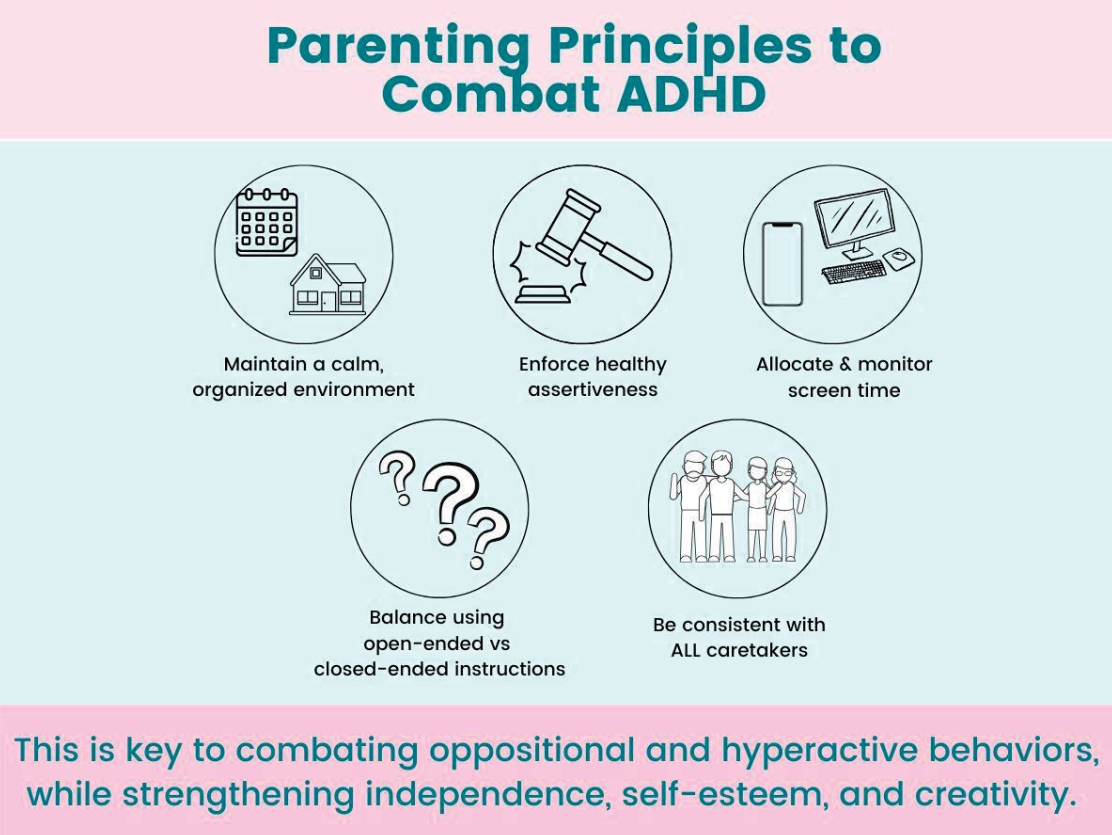
The prevalence of attention-deficit/hyperactivity disorder, conduct disorder, and other related behavioral problems is increasing among children, likely due to less interaction with their parents and the real world and more time spent on screens, on social media, and in the virtual world. This article highlights several simple, basic parenting principles to facilitate the growth of healthy, resilient minds and combat the symptoms of opposition, hyperactivity, and distractibility.
- Review Article
- Allergy
- Moderate to severe atopic dermatitis in children: focus on systemic Th2 cytokine receptor antagonists and Janus kinase inhibitors (30 times)
- Jeong Hee Kim, Mona Salem Samra
- Clin Exp Pediatr. 2024;67(2):64-79. Published online June 14, 2023
-

· Atopic dermatitis (AD) is characterized by a strong T helper (Th)2 response, although the extents of Th22, Th17/ interleukin (IL)-23, and Th1 responses vary among disease subtypes.
· Children with moderate to severe AD may require early systemic therapy to reduce the systemic inflammation caused by increased Th2 cytokine levels.
· Dupilumab, which blocks IL-4/IL-13 receptor, has equivalent efficacy for extrinsic and intrinsic AD and a favorable safety profile in infants and children aged 6 months and older.
- Editorial
- Endocrinology
- Nonalcoholic fatty liver disease in children and adolescents (30 times)
- Hae Sang Lee
- Clin Exp Pediatr. 2024;67(2):90-91. Published online January 24, 2024
-

· With the increase in childhood obesity, nonalcoholic fatty liver disease (NAFLD) has become a concern in recent years.
· NAFLD is strongly associated with insulin resistance.
· Lifestyle modifications are the mainstay treatment for NAFLD.
- Original Article
- Infection
- Clinical characteristics and associated factors of pediatric acute necrotizing encephalopathy: a retrospective study (30 times)
- Huiling Zhang, Yilong Wang, Qianyun Ding, Xuekun Li, Sheng Ye
- Clin Exp Pediatr. 2025;68(2):153-162. Published online November 11, 2024
-

· The mortality rate of acute necrotizing encephalopathy was high.
· Laboratory tests revealed that the fatal group had higher creatinine, lactate, activated partial thromboplastin time, thrombin time, interleukin (IL)-6, IL-10, creatine kinase, and D-dimer than survivors.
· The fatal group displayed lower Glasgow Coma Scale scores and arterial pH.
- Editorial
- Pulmonology
- Wheezing in infants and preschoolers: phenotypes and treatment options (29 times)
- Jung Yeon Shim
- Clin Exp Pediatr. 2023;66(1):26-27. Published online December 6, 2022
-
· Knowing who will develop into asthma or who will not is important to impose proper treatment and early intervention in a child with the first episode of wheezing.
· Phenotypes of severe bronchiolitis in less than 2-year-old children with first episode of wheezing were suggested for different treatment options
· RV-induced and/or atopy-associated severe wheezing in preschool children may benefit from early intervention of asthma treatment.
- Review Article
- Other
- Peripheral nerve sheath tumors in the head and neck in patients with APC gene deletion mutations: a case report and scoping review of the literature (29 times)
- Koral M. Blunt, Monirah Albathi, Miriam Conces, Tendy Chiang
- Clin Exp Pediatr. 2025;68(6):428-433. Published online January 13, 2025
-

In this report, we describe our experience with a patient with an APC-related genetic syndrome who presented with a rare palatal lesion with characteristics of a schwannoma. We discuss the role of immunohistochemical staining in discerning the differential diagnosis.
- Original Article
- Infection
- Role of miRNA-146a and miRNA-125b in Helicobacter pylori (29 times)
- Nashwa Farouk Mohamed, Ola G.A. Behairy, Manal S. EL-Defrawy, Mona Mahmoud Elsayed, Naglaa F. Alhusseini
- Clin Exp Pediatr. 2025;68(10):781-789. Published online April 1, 2025
-
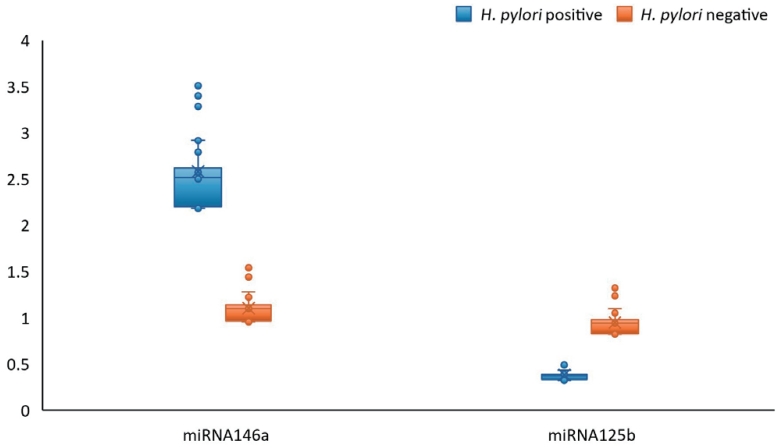
Question: Why is the early detection of Helicobacter pylori-associated gastritis in children important?
Finding: The early detection of H. pylori-related gastritis is crucial for its effective management, especially in pediatric patients with dyspepsia.
Meaning: The use of miRNA signatures could detect early gastritis, enabling timely H. pylori eradication treatment to mitigate growth delays and cancer risk.
- Developmental and Behavioral Medicine
- Impact of short and intensive art-based intervention on symptomatology and social interactions among children with autism spectrum disorder (28 times)
- Deldar Morad Abdulah, Bayar Mohammed Omar Abdulla, Pranee Liamputtong
- Clin Exp Pediatr. 2023;66(10):447-454. Published online September 14, 2023
-

Question: Does a short and intensive art-based intervention affect symptoms and social interactions among children with autism spectrum disorder (ASD)?
Finding: The short and intensive art-based intervention did not affect symptoms in children with ASD level 2 or 3, including social awareness, social cognition, social communication, social motivation, and autistic mannerisms.
Meaning: The short and intensive art-based intervention did not improve the symptoms of patients with ASD.
- Effectiveness of online responsive teaching in young children with developmental disabilities: a pilot study (28 times)
- Jung Sook Yeom, Jeongmee Kim
- Clin Exp Pediatr. 2024;67(6):303-311. Published online May 21, 2024
-

Question: Does online responsive teaching (RT) impact children's and parents’ emotions and behaviors, and do parents find it satisfactory?
Finding: Online RT significantly improved children's pivotal and problem behaviors, decreased parenting stress, and enhanced parental interactive styles with high satisfaction.
Meaning: This pilot study's findings suggest that online RT can enhance child outcomes, offering accessible interventions amid challenges such as limited access and pandemics.
- Hematology
- Evaluation of Bak and Bcl-Xl gene expression among pediatric patients with acute primary immune thrombocytopenia (28 times)
- Amira Zaki Badawy, Samia Hassan Kandel, Iman Aly Ahmedy, Mahmoud Ahmed Elhawy, Sally Mohamed El-Hefnawy, Dina Fouad Sief El-Nasr Zidan, Hanan Hassan El-sheity
- Clin Exp Pediatr. 2025;68(11):901-908. Published online August 6, 2025
-

The B-cell lymphoma protein 2 family proteins Bak and Bcl- Xl, important markers of apoptosis, may contribute to primary immune thrombocytopenia (ITP). Thus, their expression may serve as biomarkers for the diagnosis and monitoring of pediatric ITP. Targeting these pathways may improve platelet survival, particularly in treatment-resistant cases. Personalized treatments based on apoptotic profiles can optimize therapy and reduce the unnecessary use of immunosuppressive drugs.
- Neurology
- Long-term neurological cognitive, behavioral, functional, and quality of life outcomes after fetal myelomeningocele closure: a systematic review (27 times)
- Andre Marolop Pangihutan Siahaan, Martin Susanto, Sarma Nursani Lumbanraja, Dwi Herawati Ritonga
- Clin Exp Pediatr. 2023;66(1):38-45. Published online November 30, 2022
-

· Fetal myelomeningocele closure significantly improved long-term neurological cognitive, behavioral, functional, and quality of life outcomes, most likely by reducing hydrocephalus rates.
· However, fetal myelomeningocele closure is associated with a significant risk of pregnancy complications, especially premature rupture of membranes and preterm delivery.
- Gastroenterology
- Relationship between nonalcoholic fatty liver disease and hyperandrogenemia in adolescents with polycystic ovary syndrome (27 times)
- Ozlem Kara, Hanife Aysegul Arsoy, Murat Keskin
- Clin Exp Pediatr. 2023;66(9):395-402. Published online June 14, 2023
-

Question: Is polycystic ovary syndrome (PCOS) a risk factor for nonalcoholic fatty liver disease (NAFLD) in adolescents?
Finding: The frequency of NAFLD did not increase in adolescents with PCOS. However, hyperandrogenemia was a risk factor for NAFLD.
Meaning: Adolescents with PCOS and hyperandrogenemia should be closely monitored for hepatic steatosis.
- Neonatology (Perinatology)
- Effect of vitamin E supplementation on bilirubin levels in infants with hyperbilirubinemia: a double-blind randomized clinical trial (27 times)
- Mojtaba Cheraghi, Maziar Nikouei, Majid Mansouri, Siros Hemmatpour, Yousef Moradi
- Clin Exp Pediatr. 2024;67(5):249-256. Published online March 26, 2024
-
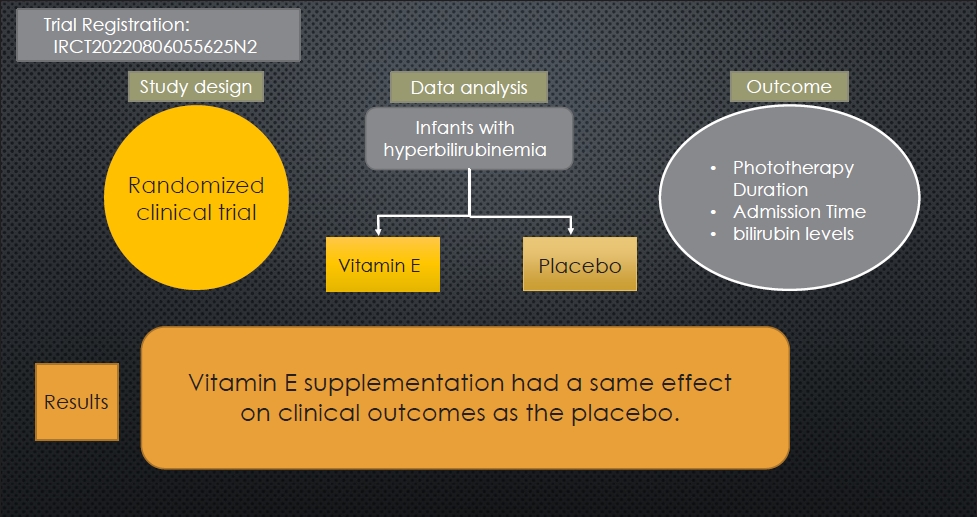
Question: Is vitamin E a viable therapeutic option for managing neonatal hyperbilirubinemia?
Finding: This randomized clinical trial examined the effects of oral vitamin E supplementation on bilirubin reduction (primary outcome), phototherapy duration, and length of hospital stay (secondary outcome) in 138 infants.
Meaning: Infants administered vitamin E versus placebo demonstrated similar reductions in bilirubin levels and length of hospital stay.
-

-
-
6.02024CiteScore98th percentilePowered by
-
Impact Factor3.6
-
- TOPICS
- ARTICLE CATEGORY
- Editorial Office
-
Korean Pediatric Society
#1606 Seocho World Officetel, 19 Seoun-ro, Seocho-ku, Seoul 06732, Korea
Tel: +82-2-3473-7306 Fax: +82-2-3473-7307 E-mail: office@e-cep.org
Clinical and Experimental Pediatrics is an open access journal. All articles are distributed under the terms of the Creative Commons Attribution NonCommercial License (http://creativecommons.org/licenses/by-nc/4.0/)
Copyright © 2025 by Korean Pediatric Society.











